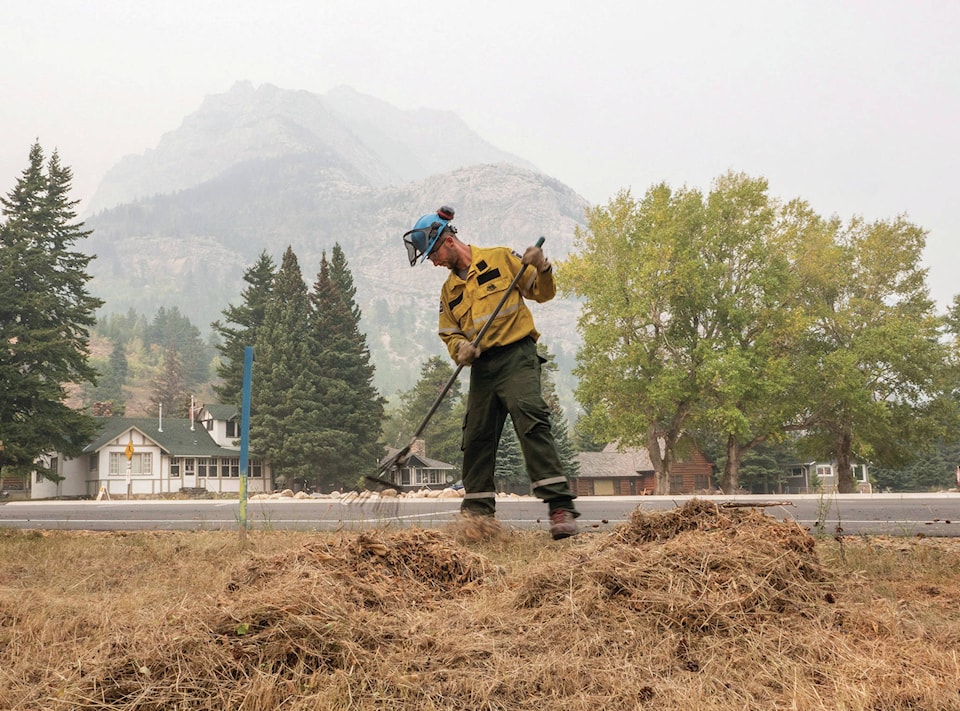Canada’s iconic Prince of Wales Hotel was kept safe from the Waterton Lakes fires because of the efforts of firefighters across Canada — including a team from Ponoka.
Town of Ponoka Fire Chief Jamie Wilkinson returned to Central Alberta with three of his colleagues after they spent a couple of days protecting the National Historic Site from flames.
The rustic railway hotel’s eye-catching location – on top of a bluff overlooking the Waterton townsite – puts it in proximity to controlled burns. These were being set by firefighting crews around the hamlet to use up combustible materials, creating a break between the wildfires and endangered homes and businesses.
After Wilkinson was deployed to Waterton Lakes National Park early Tuesday, he and other municipal firefighters were assigned to protect the 86-room wooden heritage building. And it was quite a responsibility, he admitted, since the Prince of Wales Hotel has become symbolic of the park at the Alberta-U.S. border and is a designated National Historic Site.
The seven-storey structure was built in 1927 by the Great Northern Railway to try to attract American tourists to Alberta during the prohibition era. The only grand railway hotel constructed in Canada by a U.S. rail company was named for the British Prince of Wales (later King Edward VIII). But the hotel wasn’t graced by his royal presence, since the prince opted to stay at a nearby ranch during his 1927 Canadian Tour.
With the unique building’s history, Wilkinson said, “You don’t want to be off your guard and let the fire go around you, so you lose it (the hotel). But he didn’t believe there was much chance of this, since the hotel was being protected by 30 to 40 firefighters — some from as far as Ontario.
And preventative measures were taken: Firefighters sprayed the exterior lightly with water. Wilkinson said fire hoses were also attached to pumps in the lake, and their nozzles were aimed from the top of pumper truck booms at the structure’s shingled roof.
Although the firefighters had to “knock down some hot spots” along the lake’s edge, the hotel wasn’t touched by flames. And that’s a good thing, because water from high-pressure fire hose would have created a different kind of damage — blasting off shingles and architectural details. “It can even peel paint,” said Wilkinson.
He left the area late on Wednesday, after the wind turned and the wildfires were no longer threatening the townsite or hotel.
Having observed Waterton’s burned-out visitor information centre, its blackened forests and wildfires still flickering on the hills, he added, “It was a good eyeopener. It can really show you what a wildfire can do within a community… But it also shows that our province is well prepared for emergencies.”
Some emergency planning in the Waterton area was made possible by the County of Red Deer’s mobile command post. Assistant county manager Ric Henderson said the office-on-wheels was taken down to provide a computerized space for police to plan road blocks and detours.
The mobile command post had previously been used mostly for local search and rescue cases. Henderson said the Waterton experience showed “good team work, and relationship building.”
